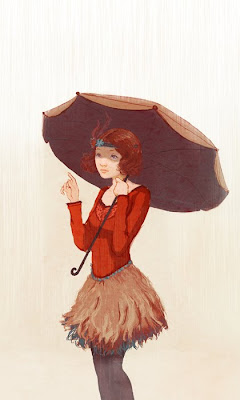
This time of year seems so busy and restless. I've been working pretty nonstop to finish up a few projects, and it's crazy that another year of students is already graduating. Time really speeds up after you leave college, and it's a strange life change, learning to live and work on your own for the first time.
In seeing a lot of buzz about recruiting and job hunting, a few of us were thinking about how we got started, and were reminiscing about this anxious time of year. I graduated before the recession, so I'm sure graduating into an almost 10% unemployment rate is even more nerve wracking. However, I don't think it's all doom and gloom. This generation has a lot of technical advantages on their side, and the industry isn't as dead or dying as we think. It is changing, but regardless, people will never stop needing art, and that's just that.
That being said, I had the idea to post about a few of the things I think graduating students should consider, or things I found helpful in getting started:
- First off, Ringling students who are graduating this year, if you have a blog or website, don't put "Senior Year Illustration Major!" on your site. Go and edit your information right now, and just say that you're an Illustrator, because you are. How you present yourself to the world (or internet world) is how you will be received, and if you go out of your way to tell me you're a student, you'll be treated like a student. It tells art directors and employers that you still need training and that it's fine to pay you less. After all, you're telling me you're just a student.
- Between graduating and moving for work, I bought and read How to be a Graphic Designer Without Losing your Soul and I highly recommend it, even if you aren't a graphic designer. The advice is just about the client/artist relationship, and how to really act like a professional and understand the business. I thought this was straightforward and helpful. Ringling's portfolio class (basically a business of art class) was not really helpful to me in any way, so this book made up for all the things I should have learned.
- One of the best concepts from that book, was that nothing gets you work like work. It feels like such an impossible Catch-22, that you need to have work experience to get your first job, but that's how it is. Previous work reassures a client that you've worked before and aren't going to leave them hanging. Look for an opportunity to do some work that will show clients just that. For me it was the Hallmark contest I entered all those years ago. After that, having some work with the Ringling Design Center was just another way to show I knew how to actually finish work.
- Be smart about the opportunities that come along, but when you see them, take them. We joke about the job postings on craigslist, because it's ridiculous that someone would design a logo for $50, but those jobs exist because people take them, on the false premise that the "exposure" will make up for your low pay. On the other hand, there are companies that freelance out cool work at a lower rate, and the work probably REALLY WILL get you more work in the field, a client on your client list, and a cool portfolio piece. If you're smart about which work you take, you'll work your way up eventually. If getting that first job is too hard, try selling prints on Etsy, entering designs on sites like Threadless.com, or submitting work to competitions. You're trying to show how legit and un-studentlike you are, and when you're starting out, how you spin what experience you have makes a difference.
I have a few more points, but I'm thinking of splitting those into my next post. For now, I wish everyone the best of luck. I'm taking a much needed vacation.



